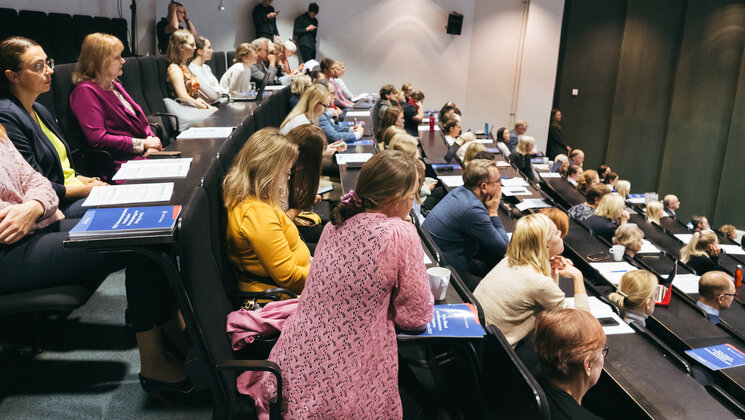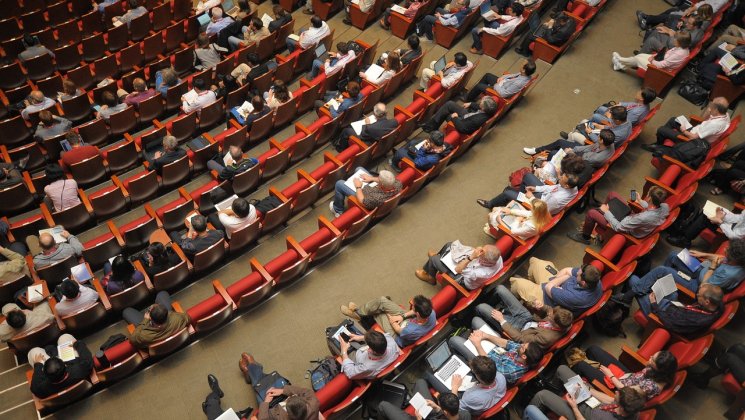-
Faculty of Arts and HumanitiesDean's Office, Faculty of Arts and HumanitiesJakobi 2, r 116-121 51005 Tartu linn, Tartu linn, Tartumaa EST0Institute of History and ArchaeologyJakobi 2 51005 Tartu linn, Tartu linn, Tartumaa EST0Institute of Estonian and General LinguisticsJakobi 2, IV korrus 51005 Tartu linn, Tartu linn, Tartumaa ESTInstitute of Philosophy and SemioticsJakobi 2, III korrus, ruumid 302-337 51005 Tartu linn, Tartu linn, Tartumaa EST0Institute of Cultural ResearchÜlikooli 16 51003 Tartu linn, Tartu linn, Tartumaa EST0Institute of Foreign Languages and CulturesLossi 3 51003 Tartu linn, Tartu linn, Tartumaa EST0School of Theology and Religious StudiesÜlikooli 18 50090 Tartu linn, Tartu linn, Tartumaa EST0Viljandi Culture AcademyPosti 1 71004 Viljandi linn, Viljandimaa EST0Professors emeritus, Faculty of Arts and Humanities0Associate Professors emeritus, Faculty of Arts and Humanities0Faculty of Social SciencesDean's Office, Faculty of Social SciencesLossi 36 51003 Tartu linn, Tartu linn, Tartumaa EST0Institute of EducationJakobi 5 51005 Tartu linn, Tartu linn, Tartumaa EST0Johan Skytte Institute of Political StudiesLossi 36, ruum 301 51003 Tartu linn, Tartu linn, Tartumaa EST0School of Economics and Business AdministrationNarva mnt 18 51009 Tartu linn, Tartu linn, Tartumaa EST0Institute of PsychologyNäituse 2 50409 Tartu linn, Tartu linn, Tartumaa EST0School of LawNäituse 20 - 324 50409 Tartu linn, Tartu linn, Tartumaa EST0Institute of Social StudiesLossi 36 51003 Tartu linn, Tartu linn, Tartumaa EST0Narva CollegeRaekoja plats 2 20307 Narva linn, Ida-Virumaa EST0Pärnu CollegeRingi 35 80012 Pärnu linn, Pärnu linn, Pärnumaa EST0Professors emeritus, Faculty of Social Sciences0associate Professors emeritus, Faculty of Social Sciences0Faculty of MedicineDean's Office, Faculty of MedicineRavila 19 50411 Tartu linn, Tartu linn, Tartumaa ESTInstitute of Biomedicine and Translational MedicineBiomeedikum, Ravila 19 50411 Tartu linn, Tartu linn, Tartumaa ESTInstitute of PharmacyNooruse 1 50411 Tartu linn, Tartu linn, Tartumaa ESTInstitute of DentistryL. Puusepa 1a 50406 Tartu linn, Tartu linn, Tartumaa ESTInstitute of Clinical MedicineL. Puusepa 8 50406 Tartu linn, Tartu linn, Tartumaa ESTInstitute of Family Medicine and Public HealthRavila 19 50411 Tartu linn, Tartu linn, Tartumaa ESTInstitute of Sport Sciences and PhysiotherapyUjula 4 51008 Tartu linn, Tartu linn, Tartumaa ESTprofessors emeritus, Faculty of Medicine0associate Professors emeritus, Faculty of Medicine0Faculty of Science and TechnologyDean's Office, Faculty of Science and TechnologyVanemuise 46 - 208 51003 Tartu linn, Tartu linn, Tartumaa ESTInstitute of Computer ScienceNarva mnt 18 51009 Tartu linn, Tartu linn, Tartumaa ESTInstitute of GenomicsRiia 23b/2 51010 Tartu linn, Tartu linn, Tartumaa ESTEstonian Marine Institute0Institute of PhysicsInstitute of ChemistryRavila 14a 50411 Tartu linn, Tartu linn, Tartumaa ESTInstitute of Mathematics and StatisticsNarva mnt 18 51009 Tartu linn, Tartu linn, Tartumaa EST0Institute of Molecular and Cell BiologyRiia 23, 23b - 134 51010 Tartu linn, Tartu linn, Tartumaa ESTTartu ObservatoryObservatooriumi 1 61602 Tõravere alevik, Nõo vald, Tartumaa EST0Institute of TechnologyNooruse 1 50411 Tartu linn, Tartu linn, Tartumaa ESTInstitute of Ecology and Earth SciencesJ. Liivi tn 2 50409 Tartu linn, Tartu linn, Tartumaa ESTprofessors emeritus, Faculty of Science and Technology0associate Professors emeritus, Faculty of Science and Technology0Area of Academic SecretaryHuman Resources OfficeÜlikooli 18, ruumid 302 ja 304 50090 Tartu linn, Tartu linn, Tartumaa EST0Area of Head of FinanceFinance Office0Area of Director of AdministrationInformation Technology Office0Administrative OfficeÜlikooli 17 (III korrus) 51005 Tartu linn, Tartu linn, Tartumaa EST0Estates Office0Marketing and Communication OfficeÜlikooli 18, ruumid 102, 104, 209, 210 50090 Tartu linn, Tartu linn, Tartumaa EST0Area of Vice Rector for DevelopmentCentre for Entrepreneurship and InnovationNarva mnt 18 51009 Tartu linn, Tartu linn, Tartumaa EST0University of Tartu Natural History Museum and Botanical GardenVanemuise 46 51003 Tartu linn, Tartu linn, Tartumaa EST0International Cooperation and Protocol Office0University of Tartu MuseumLossi 25 51003 Tartu linn, Tartu linn, Tartumaa EST0Area of RectorRector's Strategy OfficeInternal Audit OfficeArea of Vice Rector for Academic AffairsOffice of Academic AffairsUniversity of Tartu Youth AcademyUppsala 10 51003 Tartu linn, Tartu linn, Tartumaa ESTStudent Union OfficeÜlikooli 18b 51005 Tartu linn, Tartu linn, Tartumaa EST0Centre for Learning and TeachingArea of Vice Rector for ResearchUniversity of Tartu LibraryW. Struve 1 50091 Tartu linn, Tartu linn, Tartumaa ESTGrant Office
Doctoral defence: Celia Teresa Pozo Ramos „Preparation and assessment of antimicrobial electrospun matrices for prospective applications in wound healing”
On May 10th Celia Teresa Pozo Ramos will defend her thesis „Preparation and assessment of antimicrobial electrospun matrices for prospective applications in wound healing”.
Supervisors:
Professor Karin Kogermann, University of Tartu
Professor Tanel Tenson, University of Tartu
Associate professor Ivo Laidmäe, University of Tartu
Visiting research fellow Marta Putrinš, University of Tartu
Opponent:
Professor Hanne Mørck Nielsen, University of Copenhagen (Denmark)
Summary:
Non-healing wounds constitute a significant burden to patients as well as to healthcare systems. Effective wound management is essential for controlling infections that occur when the skin barrier is compromised. Conventional topical formulations often face efficacy challenges due to their short residence time and the presence of wound exudate, while systemic antibiotics may raise toxicity concerns. Additionally, antimicrobial resistance poses a major challenge for treating wound infections, with the availability of effective drugs diminishing in recent years. This dissertation proposes novel drug delivery systems for local wound infection treatment, aiming to enhance the efficacy of antimicrobial substances.
Electrospun wound dressings, characterized by their nano- to microfibrous structure, enable the incorporation of active drug substances, thereby improving drug stability and controlling release rates. Additionally, electrospun matrices exhibit morphology and physicochemical properties that closely resemble the natural extracellular matrix, enhancing moisture balance, absorption, and gas exchange, thereby promoting wound healing.
The aim was to prepare and characterise antimicrobial electrospun fibrous matrices for use as wound dressings. Chloramphenicol and pleurocidin were separately incorporated into electrospun matrices using different polymers, solvent systems, and electrospinning techniques. Initially, porous fibers were developed, highlighting the crucial role of humidity and solvent in their preparation. Subsequent analyses of the morphology and mechanical properties of the electrospun matrices revealed significant influences from factors such as polymer concentration, fiber porosity, and solvent system. The electrospinning process affected the solid state of both the drug and polymer, inducing different molecular interactions and variations in the drug release profiles. The hydrophilicity/hydrophobicity ratio influenced release kinetics, while matrix morphology affected the wetting and buffer penetration abilities. The safety and biocompatibility of the matrices were confirmed through the MTS assay and confocal fluorescence microscopy. Antibacterial and antibiofilm properties against multiresistant wound pathogens varied based on the matrix morphology and drug release behaviour, with pleurocidin-loaded matrices notably outperforming freshly made solutions. Furthermore, the phenotypical effects of combining pleurocidin with different biocides revealed diverse outcomes that must be considered for concomitant treatment applications.
Doctoral defence: Celia Teresa Pozo Ramos „Preparation and assessment of antimicrobial electrospun matrices for prospective applications in wound healing”

Call for abstracts: scientific conference celebrating the anniversary of the Faculty of Medicine

Rahvusvaheline BBBB farmaatsiakonverents “Today’s science, tomorrow’s healthcare”

